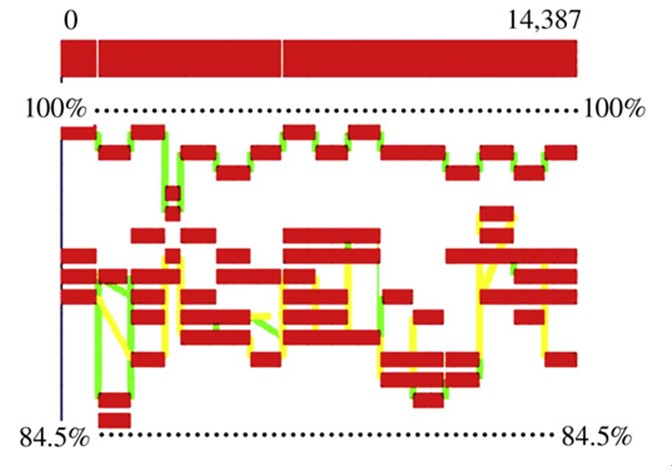2012-02-17 Microbial pangenome often leads to a global view and overall comprehension in genetic content and variability for the species. Recently, a cooperated group of scientists led by Prof. YU Jun at Beijing Institute of Genomics (BIG), Chinese Academy of Sciences (CAS), Prof. ZHANG Jie at Institute of Plant Protection (IPP), Chinese Academy of Agricultural Sciences (CAAS) and Prof. Ibrahim AL-MSSALLEM at King Abdulaziz City for Science and Technology (KACST), Kingdom of Saudi Arabia are working on the pangenomic study of Bacillus thuringiensis (B. thuringiensis). B. thuringiensis is a Gram-positive bacterium and is widely used as a biological pesticide because of its ability to kill insects of several diverse taxonomic orders which are composed of harmful pests to crops and human health. In the recent study, seven B. thuringiensis strains were sequenced using the next sequencing technology to carry out a pangenomic study for both understanding their pangenomic characteristics and discovering their insect-killing genes. The seven B. thuringiensis isolates were sequenced in both high coverage and base-quality using the next-generation sequencing platform. The results were compared to the pangenomes of its closely related species, which has shown that B. thuringiensis pangenome is similar to B. cereus (both open pangenomes) but different from B. anthracis (closed pangenome). Therefore, B. thuringiensis and B. cereus can easily exchange or acquire genetic materials with/from other bacteria through genetic mechanisms. With open pangenomes, B. thuringiensis and B. cereus are also free to acquire genetic materials from the environment and thus to best fit themselves into their evolutionary landscapes. The scientists have also stated that high-coverage sequence assemblies from multiple strains, before all the gaps are closed, are very useful for pangenomic studies. Paper link: http://www.sciencedirect.com/science/article/pii/S1673852711001895 Orthologous gene alignment based on sequence assemblies of the seven B. thuringiensis isolates. (Image by FANG Yongjun et al.) Contact: Prof. YU Jun Email: junyu@big.ac.cn Prof. ZHANG Jie Email: jzhang@ippcaas.cn Prof. Ibrahim AL-MSSALLEM Email: imssallem@kacst.edu.sa 
